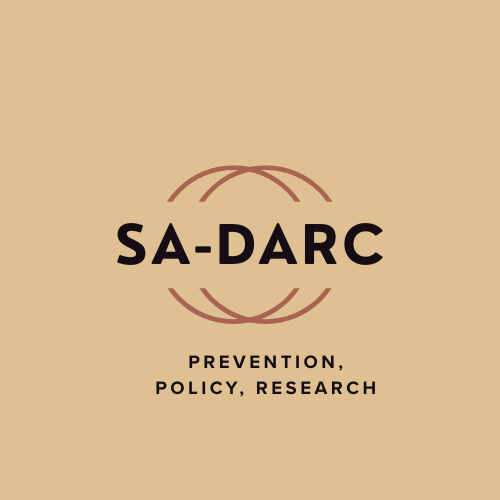Drug Overdose -Deaths in India and fixing accountability
India faces a growing opioid crisis, demanding a closer examination of its prevalence, demographic characteristics, and emerging trends. While comprehensive overdose statistics remain elusive due to data collection limitations, the increasing rates of substance use paint a concerning picture. The opioid crisis in India is not an isolated phenomenon; it is intertwined with global trends in drug use. Recent data indicates a significant rise in substance use worldwide. An estimated 292 million individuals, representing 5.6% of the global population aged 15 to 64, have used drugs in the past year, marking a 20% increase since 2012. In India, a substantial portion of the population engages in alcohol and cannabis consumption, alongside the non-medical use of sedatives. Specifically, 14.6% of individuals aged 10 to 75 are current alcohol users, with 5,2% exhibiting alcohol dependence. Furthermore, 2.8% of the population uses cannabis, while 1.08% engages in the non-medical use of sedatives. young adults, particularly those aged 18-25, exhibit the highest rates of addiction, underscoring the vulnerability of this demographic.
Drug Prevalence in India ( Aged 10-75)
Alcohol Users 14.6%
Cannabis Users 2.8%
Non-Medical Sedative Users 1.08%
The opioid crisis in India is further underscored by the fact that the prevalence of opioid use is three times the global average, affecting approximately 2.1% of the population. Heroin use accounts for 0.2% of opioid use cases. This data emphasises the severity of opioid use within the country.
Type of Opioid Use Prevalence in India
Total Opioid Use 2.1%
Heroin Use 0.2%
India’s demographic landscape provides essential context to the opioid crisis. As of 2023, India’s population stands at 1, 438, 069, 596, with a projected increase of 17% by 2050. The birth rate is 16.15 births per 1,000 people, while the death rate is 9.1 deaths per 1,000 people. While India has made strides in death registration, increasing it from 67% in 2010 to 92% in 2019, data collection limitations persist, hindering the comprehensive assessment of overdose statistics. The prevalence of opioid use is 0.7%, with heroin use specifically at 0.2%.Men are significantly more vulnerable to overdose deaths caused by opioids and stimulant drugs. A substantial portion of the population engages in substance use, with 16 crore people (14.6%) between the ages of 10 and 75 being current alcohol users, and 5.2% of them being alcohol-dependent. Additionally, approximately 3.1crore individuals (2.8%) are cannabis users, and 72 lakh ( 0.66%) people suffer from cannabis-related problems. Furthermore, 1.18 crore (1.08%) are current users of sedatives for non-medical purposes.
Demographic Statistic Value
Population (2023) 1, 438,069,596
Projected Population Increase (by 2050) 17%
Birth Rate 16.15 births/1000 people
Death Rate 9.1 deaths / 1000 people
Opioid Use Prevalence 0.7%
Heroin Use Prevalence 0.2%
Several factors contribute to opioid overdoses, including the type of opioid, co-use of substances such as benzodiazepines and alcohol, and socioeconomic conditions. Certain populations, such as those in rural areas, may face higher risks. Economic factors like poverty and unemployment can correlate with higher rates of opioid prescriptions and related hospitalisations. These complex interactions underscore the need for targeted interventions that address both individual and systemic factors.
Naloxone is a critical tool in reversing opioid overdoses. This medication blocks the effects of opioids and restores breathing and can be administered as a nasal spray or injection. The World Health Organisation (WHO) promotes naloxone as a crucial component of overdose prevention and response strategies globally. Increased awareness and availability of naloxone are essential components of harm reduction strategies.
The opioid crisis in India demands immediate attention and comprehensive action. While data collection limitations pose challenges, the available statistics reveal a concerning trend in opioid and other drug use. Addressing this crisis requires a multi-faceted approach that includes targeted interventions, increased awareness, and improved access to life-saving medications like naloxone. The vulnerability of young adults and the influence of socio-economic factors underscores the need for tailored strategies that address both individual and systemic issues. By prioritising data collection, implementing evidence-based interventions, and fostering collaboration between stakeholders, India can mitigate the devastating impact of the opioid crisis and safeguard the health and well-being of its population.
References:
Bhrigupati Singh, Ravindra Rao, Is there an opioid epidemic in India?, Journal of Public Health, Volume 43, Issue Supplement_2, October 2021, Pages ii43–ii50, https://doi.org/10.1093/pubmed/fdab322
https://dph.illinois.gov/topics-services/opioids/overdose.html
https://www.who.int/news-room/fact-sheets/detail/opioid-overdose
